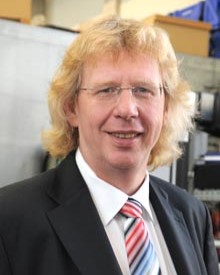Research Profile
Teaching at the Chair of Energy Conversion Systems for Mobile Applications (EMA) includes the internal combustion engine and all related topics, but electromobility and fuel cells are also becoming increasingly important. The name ‘Energy Conversion Systems for Mobile Applications’ (EMA) recognises this.
The Chair has made a name for itself with publicly funded basic research projects (DFG, AiF) and application-orientated industrial research. The intensive co-operation with leading vehicle manufacturers and the supplier industry is particularly noteworthy. The topics of the theses and dissertations are recruited from the co-operation with the industrial companies, which results in very good entry opportunities for the students.
The department is equipped with several engine test benches, a battery simulator, injection test benches, special measurement set-ups and extensive measurement technology. Here is an overview of the most important subject areas:
Petrol / gas / diesel engines
- Mixture formation
- Water injection
- Ignition systems
- High-pressure injection
- Spray formation
- Combustion chamber geometry
- Exhaust gas analysis
- Particulate filter/particulate filter regeneration
- NOx exhaust gas aftertreatment
alternative motor fuels
- E-Fuels
- Biodiesel, Bioethanol, Pflanzenöl
- Biomass to Liquid (2. Generation)
- Gas to Liquid (GtL)
- Gase: Compressed Natural Gas, Liquefied Natural Gas
Calculation and simulation
- Mixture formation/combustion/thermal management
- Fuel cell and battery systems
- Analysis of hydrogen engines
- Analysis of combustion engines
- Simulation of variable valve operations
- Thermodynamic analysis of energy conversion processes
- Flow processes in the combustion chamber
- Simulation of injection hydraulics
- Simulation of exhaust gas pressure control
Programmes/software:
- AVL FIRE, AVL Cruise M, ANSYS CFX, Virtual Lab, GT Power, Converge, Cantera, OPEN Foam
Acoustics
- Noise optimisation of the injection system
- Evaluation of the acoustics of electric motors
- Mapping the structural/radiation behaviour
- Vibroacoustic benchmarking
- Operating vibration analyses
- Analysis and simulation of sound transfer paths
- Sound source localisation and analysis with microphone arrays and intensity probes
- Sound source localisation with scanning laser vibrometer
- Measurement of rotational irregularities
- Vibration measurement on rotating parts with optical derotator
- Active vibration damping with piezo actuators
Electric drives
Acoustics
Fuel cell
Simulation

